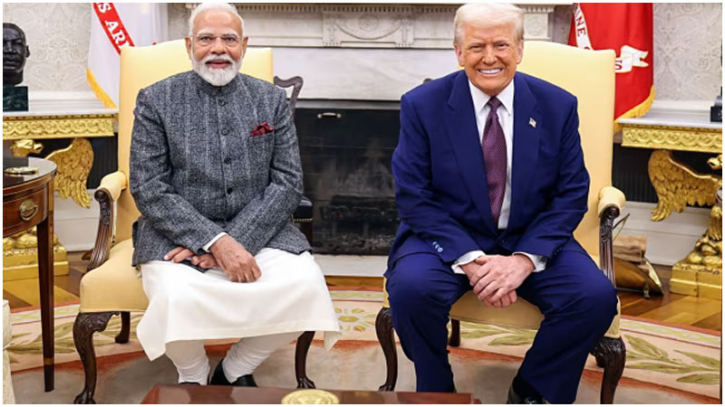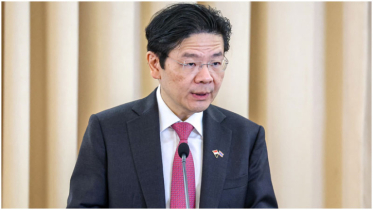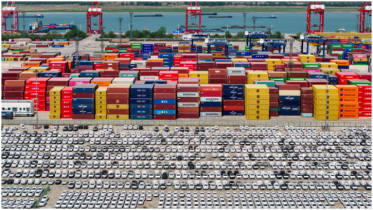Trump-Modi energy pledge signals bonanza for US gas exporters

US gas exports are the most likely beneficiaries of a pledge by the US President Donald Trump and Indian Prime Minister Narendra Modi to make India a leading buyer of American energy, analysts said, as the world’s fastest-growing big country sucks in more fossil fuels from around the world.
Modi and Trump, meeting last week for the first time since the US president’s inauguration, agreed to increase American oil and gas exports as part of efforts to rebalance the two countries’ trade relationship.
Currently, Russia is the main supplier of crude to India, while Qatar is the biggest provider of liquefied natural gas (LNG).
The US is the world’s largest LNG exporter, and already accounted for about a fifth of India’s supplies in 2024. But the leaders’ commitment, which came after Trump called India a “tariff king” and “big abuser” and threatened reciprocal tariffs, has the potential to expand the market for US suppliers, experts say.
“Gas will be the real deal. India is one of the last untapped markets for gas globally which has scale,” said Rajeev Lala, director of upstream solutions at S&P Global.
At a time of more benign prices for US gas exports, “we are ready to take more natural gas”, said Arvinder Singh Sahney, chair of the Indian Oil Corporation, one of India’s top importers.
In a report released last week, the International Energy Agency said India’s natural gas consumption would increase by nearly 60 per cent by 2030, with LNG imports set to more than double in the same period driven by steady demand growth and a much slower rise in domestic production.
In 2023, India’s total net gas production met just about half of its demand.
“There’s potential for India to buy more from all sources,” India’s oil and gas minister Hardeep Singh Puri told the Financial Times in an interview shortly before the leaders’ meeting. “In India there’s great appetite for more energy.”
The government’s “primary policy decision is to take the share of natural gas in our energy mix from 6 per cent to 15 per cent by 2030”, for which India would need to import more gas, he said.
Indian companies have recently signed gas supply deals with countries as far away as Argentina.
Puri said India was already buying $20bn worth of energy from the US. By increasing purchases, “it does seem like energy, oil and gas, would be a place where India could make a dent in its trade surplus with the US”, which stood at some $35bn last year.
“US hydrocarbon purchases look to be the coin of the realm,” said Kevin Book of research group ClearView Energy Partners. “Trump... invited restitution for trade surpluses with the US in the form of oil and gas purchases.”
Since Vladimir Putin’s full-scale invasion of Ukraine in 2022, New Delhi has gorged on cheap Russian oil, which has been subject to a G7 price cap. Last year, Russia supplied India with one-third of its crude oil imports, or around 630mn barrels.
The US, by contrast, supplied India with one-tenth of that amount, 65mn barrels, during that period, according to data from LSEG.
Tougher sanctions passed by the Biden administration in January could hamper corporate India’s ability to import Russian oil at cheaper prices, providing an opportunity for US imports.
“The discount on Russian oil is now fairly small,” said Shilan Shah, a senior economist at Capital Economics.
Yet the long distance between the US and India, compared with shorter shipping routes for Middle Eastern suppliers, and the technical challenge for Indian refineries of switching between different types of crude, could limit imports.
US oil and gas exporters would welcome increased Asian trading opportunities, Book said, noting the possibility that a peace deal between Moscow and Kyiv could result in a lifting of sanctions on Russian exports.
This could eventually result in the resumption of cheap Russian pipeline gas into Europe, which could displace more expensive US LNG supplies sent by ship.
The US LNG industry said it stood ready to boost exports to India, citing private operators’ aggressive growth plans for the construction of new terminals.
Venture Global, one of the largest LNG providers in the US, said it had capacity to supply more gas to India and other Asian nations following the December start-up of its massive Plaquemines liquefaction plant in Louisiana.
“We are well positioned and have the capacity to deliver on President Trump’s commitment to supply US allies with additional LNG to meet growing global energy demand,” said chief executive Mike Sabel.
.png)




